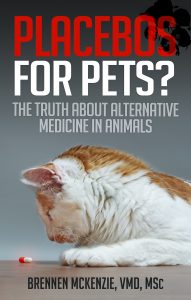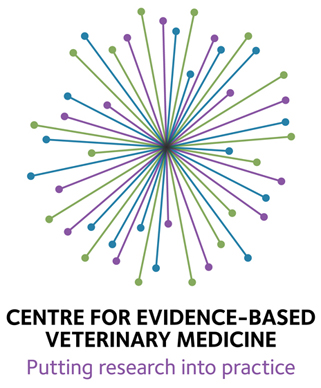I have reviewed the overall evidence concerning homeopathy, from basic science through clinical trial research in great detail previously. Despite more than 150 years of effort by advocates for this practice, virtually no reliable evidence has been developed to show it can work or does work.
The same conclusion has been reached by many others, from the systematic reviews of homeopathic trials and systematic reviews of these systematic reviews, to the formal investigations of governmental agencies such as the British House of Commons Science and Technology Committee and the Australian National Health and Medical research Council. While homeopaths have had more than a century to try, they have not been able to produce a body of scientific evidence to convince anyone but themselves that homeopathy works.
In response to criticism of homeopathy based on this lack of believable scientific evidence, veterinary homeopaths have tried presenting their own review of the science, putting as positive a spin on the evidence as they possibly can. However, when I examined this attempt in detail, it was so rife with bias and poor quality research that it amounts to little more than an example of propaganda masquerading as science. Of all the studies presented by the Academy of Veterinary Homeopathy, the overwhelming majority were so clearly biased or poorly conducted that they were meaningless. Many actually found that the homeopathic intervention didn’t work but were cited as positive anyway. Only one paper had reasonably good methodology, but in the face of overwhelming negative evidence, it takes more than one study in 150 years to validate a deeply implausible practice.
There is now a new systematic review which specifically evaluates clinical trials of homeopathy in veterinary medicine and which attempts to employ conventional standards of evidence to control for bias and other study weaknesses.
Mathie RT. Clausen J. Veterinary Homeopathy: systematic review of medical conditions studied by randomized placebo-controlled trials. Vet Rec. 2014;175(15):373-81.
This review was conducted by two advocates for homeopathy, clearly with an interest in supporting the practice: “Each of us is employed by a homeopathy charity to clarify and extend an evidence base in homeopathy.” Yet despite this obvious agenda, the authors attempt to follow the conventional standards for a systematic review, and the result is not very encouraging for homeopaths.
An extensive search found only 18 clinical trials that were eligible to be evaluated. Of these, one had a low risk of bias, six had an uncertain risk of bias, and eleven had a high risk of bias. Of the seven that had a low or uncertain risk of bias, three showed a statistically significant effect, three showed no effect, and one could not be evaluated. Of these seven trials, two were judged to provide “reliable evidence” based on an overall assessment. One showed a significant effect and the other did not. Both, the authors note, had some odd design features that made them different from the standard clinical trial format.
So the best that two committed supporters of homeopathy could find when attempting an objective evaluation of the veterinary homeopathy literature were two studies that were probably pretty reliably conducted, one of which found an effect and one of which didn’t. Once again, in the face of the inherent implausibility of the practice (despite the nonsense about “nanoparticles” which these authors themselves reference as if it solved the plausibility problem), and a century and a half of dedicated effort, such a glaring lack of positive evidence is far more consistent with homeopathy being a placebo than with it being the dramatically effective therapy its proponents claim.
Radical new ideas in medicine just as widely scoffed at as homeopathy have been able to prove themselves and be widely adopted in far less time than this. The notion, for example, that a bacteria could be the major cause of ulcers in humans went from ridicule (when proposed in 1982) to a Nobel prize (in 2005). It is plainly irrational to keep claiming homeopathy has dramatic benefits and that science will one day vindicate it when so much effort has turned up virtually nothing encouraging in the way of clinical research.
Now, undoubtedly proponents of homeopathy will respond to this systematic review by saying “See, there is evidence it works, all we need are more studies!” While the authors did a pretty good job trying to follow the procedures of a good systematic review, these reviews are not infallible. Garbage in can lead to garbage out, and I’ve written before about the danger of uncritically relying on the conclusions of systematic reviews where there is a potential for bias. Even if this review, and my own, did not find obvious reasons to reject the findings of two studies of homeopathy, out of all the many hundreds of those that have been published, this is not a vindication of homeopathy. It is simply a reflection of the limitations of the scientific process to exclude every single source of error when hundreds of attempts are made by committed believers to conduct clinical trials to prove what they already believe is true. Most positive trials in conventional medicine turn out to be false, and there is far more reason to doubt the rare positive study of magical nonsense like homeopathy.
Science never closes a door all the way. Could there possibly be evidence someday that would, consistently and repeatedly and with the best possible controls for error, show homeopathy really can be a miracle cure? The possibility cannot be ruled out 100%, but it must be recognized to be as unlikely as the idea that the next time someone leaps off a twenty-story building they will soar into the sky rather than fall to their death. The odds are so long as to make continued betting a foolish waste of resources. If homeopathy truly were dramatically effective, then like Vitamin C for scurvy and the first antibiotics, the results of clinical trials should be striking and obvious, not incredibly hard to pick out from the mass of negative findings.
This systematic review emphasizes that even with the darkest of rose-colored glasses, it is impossible to see the scientific study of homeopathy as anything other than an utter failure to find real, meaningful benefits, and that the best thing medical researchers could do for patients, human and veterinary, is to give up on this failed idea and move on to more promising research.









